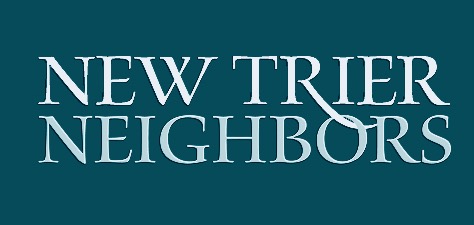In 2020, New Trier Neighbors, a volunteer grassroots group in the North suburbs of Chicago dedicated to promoting the ideas of common sense, free enterprise and the Golden Rule to their schools and local government, led an effort to pass a high school version of “Chicago Statement” at their local high school, New Trier.
A “Chicago Statement” refers to the University of Chicago’s well known statement that promotes the ideas of free speech and robust debate on its campus and the expectation that students and faculty will foster such an environment. Read more about the statement here and the 80+ universities that have signed it.
Over the past several years it had become apparent that New Trier High School could benefit from such a statement to ensure its students graduate having been taught how to think, rather than what to think.
Through a combination of presentations and meetings, the New Trier Board of Education adopted this version of “Chicago Statement” titled “Critical Thinking & Civil Discourse” statement at its October 19 2020 regular meeting:
“New Trier Township High School believes that a fundamental aspect of our mission is to develop critical thinkers who can navigate a complex world through civil discourse, respectful inquiry, engaged listening and open consideration of multiple perspectives. Key to fulfilling this charge is the cultivation of a school environment in which all students feel welcome and free to explore a wide range of ideas. Our firm commitment to this principle reflects not only New Trier’s obligation to prepare our students for their futures but our belief that the open exchange of ideas lies at the core of a democratic society in which individuals are accountable for their actions and treat one another with dignity, compassion, and respect. “
Here are a few steps that you can follow in your own community to do the same:
1. Gather Your Group
It may be 10, 20, or 100. Find people who believe in and value the marketplace of ideas. Find people willing to put their name behind this effort and recruit others into the mix. Meet several times to develop cohesion and common purpose.
2. Develop Your Case
Examine situations where the lack of a Chicago Statement has created problems. Articulate how having a statement can become a solution. Describe how having a statement can help the school set a standard in your community.
3. Draft Your Statement
Use examples or develop your own. Read the University of Chicago’s Statement as a starting place, or these two versions that New Trier considered and eventually passed. Your statement contains the values and language of the group. This is your statement.
4. Network Your Statement
Forge relationships with your board and administration, if a public school, or head of school and board of trustees if a private institution. Run the idea of a statement by them and get feedback. Ascertain any pitfalls and what it will take to pass it. Engage your group to reach out to friends and socialize the idea. Gather feedback and incorporate. People are more likely to support something they feel they have helped create.
5. Propose the Statement
Propose the statement in public to ensure that the community knows it is out there and can garner more support. If at a public institution, present at a board meeting. If at a private institution, send a copy to the head of school and board of trustees and ask that they share with the school community.
6. Promote the Statement
Write a local op-ed about the need for the statement. Share the idea with local media. Encourage friends at neighboring schools to undertake their own Chicago Statement initiative to create some local competition — see who can pass it first.
7. Persist with the Statement
Show up again and again until they either pass the statement or make the case against passing it. Elicit a deadline and persist.
8. Pass the Statement & Celebrate!
Self explanatory!
9. Follow Up on the Statement
Once adopted, follow up! Continue to monitor its implementation. How is the school promoting it within the institution? How will it be incorporated into teacher training? How will students learn about it? What mechanisms are in place to celebrate and monitor?
###
A Chicago Statement is consistent with a high-quality rigorous education that exposes students to a variety of ideas, promotes critical thinking skills and, most of all, teaches them to think for themselves.
For more information, visit www.NewTrierNeighbors.org or send an email to newtrierneighbors@gmail.com.
